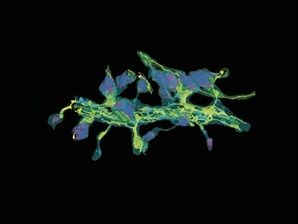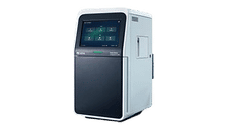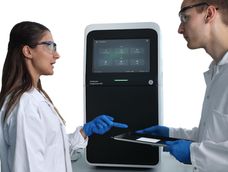The birth of new cardiac cells
Researchers answer the difficult question of where new heart cells come from
Advertisement
Recent research has shown that there are new cells that develop in the heart, but how these cardiac cells are born and how frequently they are generated remains unclear. In new research from Brigham and Women's Hospital (BWH), researchers use a novel method to identify these new heart cells and describe their origins. This research is published in Nature .
A sophisticated imaging system (MIMS) demonstrates cell division in the adult mammalian heart.
"The question about how often cardiac cells are born has been extremely difficult to answer because there was a need for new techniques to help us understand this process. We are especially excited about our findings because of the novel way in which were able to show new heart cells, using Multi-isotope Imaging Mass Spectrometry (MIMS). Our collaborator, Claude Lechene, MD, had developed this technology, and as a team we harnessed this for the cardiac regeneration question." said Richard T. Lee, MD, a physician and researcher in the Cardiovascular Division at BWH and senior author of the paper. "These data present one piece of the puzzle when it comes to the discussion around the generation of new cardiac cells."
The team of BWH researchers marked existing cardiac cells genetically to cause them to express a green fluorescent protein. Then they used Multi-isotope Imaging Mass Spectrometry (MIMS) to examine the development of new heart muscle cells, called cardiomyocytes, in a pre clinical model over a period of months. Researchers were surprised to find that new heart muscle cells primarily arose from existing heart muscle cells, rather than stem cells. Even in the setting of a heart attack, when stem cells are thought to be activated, most new heart cells were born from pre-existing heart cells.
"Our data show that adult cardiomyocytes are primarily responsible for the generation of new cardiomyocytes and that as we age, we lose some capacity to form new heart cells," said Dr. Lee. "This means that we are losing our potential to rebuild the heart in the latter half of life, just when most heart disease hits us. If we can unravel why this occurs, we may be able to unleash some heart regeneration potential."
Other news from the department science
These products might interest you
Most read news
More news from our other portals
See the theme worlds for related content
Topic World Mass Spectrometry
Mass spectrometry enables us to detect and identify molecules and reveal their structure. Whether in chemistry, biochemistry or forensics - mass spectrometry opens up unexpected insights into the composition of our world. Immerse yourself in the fascinating world of mass spectrometry!

Topic World Mass Spectrometry
Mass spectrometry enables us to detect and identify molecules and reveal their structure. Whether in chemistry, biochemistry or forensics - mass spectrometry opens up unexpected insights into the composition of our world. Immerse yourself in the fascinating world of mass spectrometry!


























































